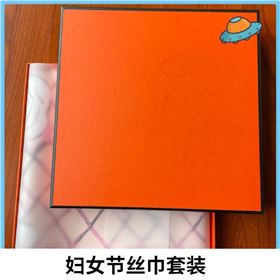A customer friend asked us, can the order be changed when there is a temporary change in production? Then we will share with you the conditions for accepting the change.
1. Is the production schedule allowed?
When foreign customers purchase clothing in China, the time span from order receipt to delivery is generally about half a year to a year, and the time is generally relatively long. When the customer proposes changes to the order, the merchandiser must consider the stage of the order to measure whether the customer's needs can be met.
(1) Early stage of the order: In the early stage of the order, since the production has not been arranged, the change of the style, technology and surface accessories will not have much impact on the production. It should try to meet the customer's requirements and cooperate with the change of the order, but Relevant matters must be followed up, such as negotiating and coordinating the change of contract terms with the processor, the change of the style requires trial production, testing and review of the sample; the change of the surface accessories needs to review the new standard sample card, and follow up the change of the purchase contract terms.
The increase or decrease in the order quantity, the change in the size and color allocation ratio, and the change in the delivery date proposed by the customer will have a relatively large impact on the production plan. It is necessary to consider the capacity of the current order and whether the flexibility of the production plan can be adjusted and changed. Changes in quantity and size require the signing of a supplementary agreement to the contract as evidence for follow-up work.
(2) Mid-term order: In the mid-term of the order, when the customer proposes changes, the interests and opinions of all parties must be weighed, as well as the operability and difficulty of implementation. Especially after the completion of the approval of the surface accessories and the confirmation of the approval board, the production stage has already begun, and the order style, process, and surface accessories are basically not allowed to be changed.
For unrealizable changes, the original contract terms must be adhered to. For terms that may be changed, it is necessary to negotiate with customers, processing plants, suppliers and other parties according to the specific progress of the order, and follow up to solve them. Negotiate with the customer about the disposal of the remaining surface accessories.
(3) Late stage of order: In the late stage of order production, the product has basically completed production, and the style and materials can no longer be changed. Customers are allowed to make changes in the packaging method, delivery time, transportation method and delivery location.
If the customer proposes to postpone the delivery, the merchandiser should negotiate with the customer for the storage cost and transportation deposit of the finished product, which will be borne by the customer, and negotiate the specific delivery date. At the same time, the merchandiser should coordinate the processing factory to do a good job in warehousing and storage of the products. If the products have already left the factory, they can be temporarily stored in the warehouse of the logistics agency or the port.
If the customer requires early delivery, the merchandiser needs to coordinate the processing plant to see if they can work overtime to complete all or part of the order production, and the overtime fee for early delivery shall be paid by the customer. At the same time, it is necessary to discuss the logistics method, the pick-up location and the new delivery time with the customer.
In order to facilitate the production arrangement, it is generally required that the style information in the contract is not allowed to be revised within one week before the mass productionoses a change, it is necessart analyze whether the customer's change request has an impact on the processing cost. For example, changes in the surface accessories and the complexity of the style will affect the cost of materials and processing costs. After calculating the relevant costs with the processing plant, follow up Changes can only be accepted if the customer negotiates to change the contract unit price, or the customer pays additional fees.
3. Is the production process allowed?
When customers propose changes in production process, style details, washing and finishing methods, etc., they need to know whether the factory can accept the change requirements. In the early stage of the order, if the factory still cannot meet the customer's change requirements after repeated testing of the board, it can be tested as an alternative processing factory. If it has entered the middle and late stages of the order, the factory can provide a double board test, and then reply to the customer whether it can be changed.
So, now that you know? What else do you want to know about custom scarf production? Message us!
——This article is excerpted from "Clothing Documentary Practice"
相关资讯:
如何鉴别围巾面料,围巾厂家鉴别围巾面料的方法(二)——越缇美
围巾厂家定制围巾步骤,围巾小知识分享(跟单)(三)——越缇美
Customized silk scarves, how do scarf manufacturers identify the quality of fabrics (1) - Yuetimei
Scarf manufacturers custom scarf steps, scarf knowledge sharing (documentary) (3) - Yue Time
Small knowledge sharing of scarf manufacturers, how to choose the shipping method - Yuetimei
 全国咨询热线:13957526630
全国咨询热线:13957526630





 定制真丝围巾
定制真丝围巾 书画定制真丝围巾
书画定制真丝围巾 文创定制真丝围巾
文创定制真丝围巾 真丝桑蚕丝丝巾
真丝桑蚕丝丝巾 电话咨询
电话咨询 关于越缇
关于越缇 定制案例
定制案例 联系越缇
联系越缇